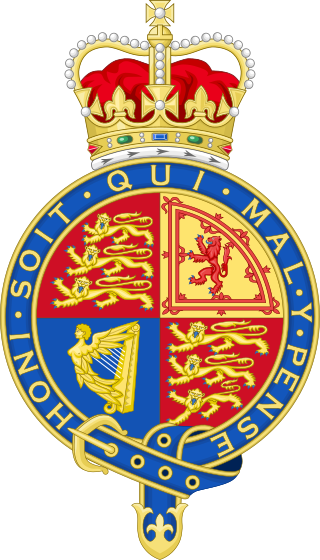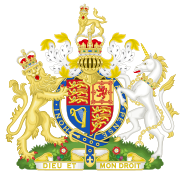
Richard Burdon Haldane, 1st Viscount Haldane, was a lawyer and philosopher and an influential British Liberal and later Labour politician. He was Secretary of State for War between 1905 and 1912 during which time the "Haldane Reforms" of the British Army were implemented. As an intellectual he was fascinated with German thought. That led to his role in seeking detente with Germany in 1912 in the Haldane Mission. The mission was a failure and tensions with Berlin forced London to work more closely with Paris.

The copyright law of Canada governs the legally enforceable rights to creative and artistic works under the laws of Canada. Canada passed its first colonial copyright statute in 1832 but was subject to imperial copyright law established by Britain until 1921. Current copyright law was established by the Copyright Act of Canada which was first passed in 1921 and substantially amended in 1988, 1997, and 2012. All powers to legislate copyright law are in the jurisdiction of the Parliament of Canada by virtue of section 91(23) of the Constitution Act, 1867.
Donaldson v Becket (1774) 2 Brown's Parl. Cases 129, 1 Eng. Rep. 837; 4 Burr. 2408, 98 Eng. Rep. 257; 17 Cobbett's Parl. Hist. 953 is the ruling by the British House of Lords that held that copyright in published works was not perpetual but was subject to statutory limits. Some scholars disagree on the reasoning behind the decision.
Originality is the aspect of created or invented works that distinguish them from reproductions, clones, forgeries, or substantially derivative works. The modern idea of originality is according to some scholars tied to Romanticism, by a notion that is often called romantic originality. The validity of "originality" as an operational concept has been questioned. For example, there is no clear boundary between "derivative" and "inspired by" or "in the tradition of."

Hedley Byrne & Co Ltd v Heller & Partners Ltd [1964] AC 465 is an English tort law case on economic loss in English tort law resulting from a negligent misstatement. Prior to the decision, the notion that a party may owe another a duty of care for statements made in reliance had been rejected, with the only remedy for such losses being in contract law. The House of Lords overruled the previous position, in recognising liability for pure economic loss not arising from a contractual relationship, applying to commercial negligence the principle of "assumption of responsibility".
The threshold of originality is a concept in copyright law that is used to assess whether a particular work can be copyrighted. It is used to distinguish works that are sufficiently original to warrant copyright protection from those that are not. In this context, "originality" refers to "coming from someone as the originator/author", rather than "never having occurred or existed before".
The Copyright Act 1957 as amended governs the subject of copyright law in India. The Act is applicable from 21 January 1958. The history of copyright law in India can be traced back to its colonial era under the British Empire. The Copyright Act 1957 was the first post-independence copyright legislation in India and the law has been amended six times since 1957. The most recent amendment was in the year 2012, through the Copyright (Amendment) Act 2012.

The Copyright, Designs and Patents Act 1988, also known as the CDPA, is an Act of the Parliament of the United Kingdom that received royal assent on 15 November 1988. It reformulates almost completely the statutory basis of copyright law in the United Kingdom, which had, until then, been governed by the Copyright Act 1956 (c. 74). It also creates an unregistered design right, and contains a number of modifications to the law of the United Kingdom on Registered Designs and patents.

Telstra Corporation Ltd v Desktop Marketing Systems Pty Ltd was a 2001–2002 case in the Federal Court of Australia in which Telstra successfully argued that its copyright had been infringed by the reproduction of data from the White and Yellow Pages telephone directories in CD-ROM format.

Sweat of the brow is a copyright law doctrine. According to this doctrine, an author gains rights through simple diligence during the creation of a work, such as a database, or a directory. Substantial creativity or "originality" is not required.
Feist Publications, Inc., v. Rural Telephone Service Co., 499 U.S. 340 (1991), was a landmark decision by the Supreme Court of the United States establishing that information alone without a minimum of original creativity cannot be protected by copyright. In the case appealed, Feist had copied information from Rural's telephone listings to include in its own, after Rural had refused to license the information. Rural sued for copyright infringement. The Court ruled that information contained in Rural's phone directory was not copyrightable and that therefore no infringement existed.

Bridgeman Art Library v. Corel Corp., 36 F. Supp. 2d 191, was a decision by the United States District Court for the Southern District of New York, which ruled that exact photographic copies of public domain images could not be protected by copyright in the United States because the copies lack originality. Even though accurate reproductions might require a great deal of skill, experience, and effort, the key element to determine whether a work is copyrightable under US law is originality.
Canon Kabushiki Kaisha v Green Cartridge Co Ltd is a 1997 decision of the Judicial Committee of the Privy Council (1) re-affirming the principle of UK copyright law that the copying of functional three-dimensional objects is an infringing reproduction of the drawings of the objects, and (2) limiting the doctrine of non-derogation from grants as to chattels to "the case in which the unfairness to the customer and the anticompetitive nature of the monopoly is as plain and obvious as it appeared to the House of Lords in the British Leyland case."

Interlego AG v Tyco Industries Inc was a case in copyright law that originated in Hong Kong that eventually went before the Judicial Committee of the Privy Council in the United Kingdom.
Chappell & Co Ltd v Nestle Co Ltd [1959] UKHL 1 is an important English contract law case, where the House of Lords confirmed the traditional doctrine that in order for a legal contract to be binding consideration must be sufficient but need not be adequate.

Attorney-General v De Keyser's Royal Hotel Limited is a leading case in UK constitutional law decided by the House of Lords in 1920 which exhaustively considered the principles on which the courts decide whether statute has fettered prerogative power. It decided that the royal prerogative does not entitle the Crown to take possession of a subject's land or buildings for administrative purposes connected with the defence of the realm without paying compensation. It is the authority for the statement that the royal prerogative is placed in abeyance when statute law can provide a legal basis for an action.
Authorship and ownership in copyright law in Canada is an important and complex topic which lies at the nexus between Canada's Copyright Act, an important body of case law, and a number of compelling policy motives. Analysis of authorship and ownership of copyrightable works in Canada can proceed by examination of the rules determining the initial allocation of copyrights, rules governing subsequent changes in ownership, and finally rules governing complex works such as compilations.

Designer Guild Limited v. Russell Williams (Textiles) Limited, is a leading House of Lords case on what constitutes copying in copyright infringement cases. The House of Lords considered whether there was infringement of a fabric design. Although both the copyrighted work and the infringing design were different in detail, the overall impression of the designs was the same. This decision is significant because the House of Lords ruled that copyright infringement is dependent on whether the defendant copied a substantial portion of the original work, rather than whether the two works look the same. The outcome suggests that in the United Kingdom the overall impression of a copyrighted work is protected if the copied features involved the labour, skill and originality of the author's work, even if the copyrighted work and infringing work are different in detail.

Sir Joseph Walton was an English lawyer and judge. He was a Justice of the High Court from 1901 until his sudden death in 1910.









